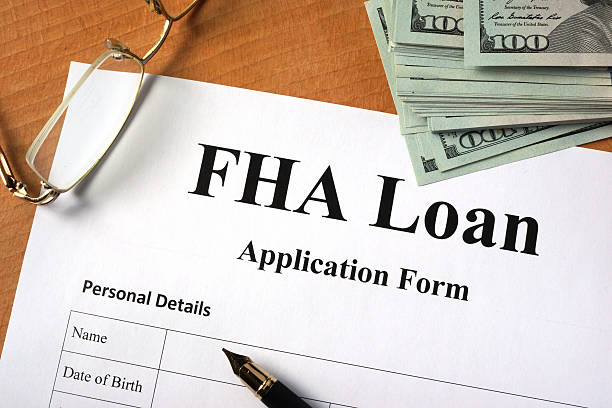Becoming a rental property owner can be an exciting and profitable venture, especially for first-time investors looking to diversify their portfolios or create a passive income stream. However, one of the biggest hurdles for new investors is securing financing. Unlike buying a primary residence, obtaining a mortgage for a rental property comes with its own set of challenges, and lenders often have stricter requirements.
If you’re considering buying rental properties and securing a mortgage as a first-time investor, it’s important to understand the process, know what lenders look for, and be prepared for the unique aspects of real estate investment financing. Here’s a step-by-step guide to help you navigate the journey to securing a mortgage for your first rental property.
1. Understand the Basics of a Rental Property Mortgage
A rental property mortgage is similar to a traditional home loan, but it typically comes with stricter requirements. Lenders see rental properties as higher risk because they depend on rental income for repayment, and vacancies, property damage, or changes in the local real estate market can affect your ability to make mortgage payments.
Key differences between a primary home mortgage and a rental property mortgage include:
- Higher down payment: For a rental property, you’ll typically need a larger down payment than for a primary residence—usually around 20% to 25%.
- Higher interest rates: Mortgage rates for rental properties are generally higher because lenders see them as more risky than loans for primary residences.
- Stricter qualifications: Lenders may require a higher credit score, larger cash reserves, and a more substantial income to qualify for a rental property mortgage.
2. Assess Your Financial Situation
Before diving into the specifics of getting a mortgage, take a close look at your own finances. Lenders will want to ensure you can handle both the mortgage payment and the potential expenses that come with owning a rental property.
- Credit score: A strong credit score is crucial when applying for any mortgage. For rental properties, most lenders prefer a credit score of at least 620, though higher scores (700 or more) are often required for the best rates.
- Debt-to-income (DTI) ratio: Lenders will look at your DTI ratio to assess your ability to manage debt. For rental properties, a DTI ratio of 36% or lower is typically preferred, though some lenders may allow a DTI up to 45%.
- Cash reserves: Rental property owners need to show that they have enough savings to cover unexpected expenses, such as repairs or vacancies. Lenders may ask for reserves that cover at least 6 months of mortgage payments, taxes, and insurance.
- Down payment: As mentioned earlier, expect to put down a minimum of 20% for a rental property. Having a larger down payment can make you a more attractive borrower and may even help you secure a better interest rate.
3. Choose the Right Type of Loan for Your Needs
There are several types of loans that investors can use to finance rental properties. The choice of loan depends on your financial situation, the type of property you’re buying, and your investment goals.
- Conventional loans: These are the most common type of mortgage for rental properties. They typically require a minimum down payment of 20%, and interest rates can be higher than those for primary homes. Conventional loans are best for investors who have a solid credit history and enough cash for the down payment and closing costs.
- FHA loans: The Federal Housing Administration (FHA) offers loans with lower down payment requirements, but these are generally only available if you’re buying a multifamily property and plan to live in one of the units. While an FHA loan can help you buy your first rental property, it isn’t an option for all investors.
- VA loans: If you’re a military veteran or active-duty service member, you may qualify for a VA loan, which offers 0% down payment options. However, like FHA loans, VA loans are only available for properties that you plan to live in.
- Commercial loans: For investors looking to purchase larger multifamily properties (typically five or more units), commercial real estate loans may be more appropriate. These loans usually have stricter qualification requirements and higher interest rates.
- Hard money loans: These loans are short-term, high-interest loans that are typically used for flipping properties rather than holding rental properties long-term. They are often easier to obtain but come with higher risk and higher costs.
4. Calculate the Potential Rental Income and Expenses
Lenders will want to ensure that the rental income from the property will cover the mortgage payment and other related expenses. This is where understanding the numbers is critical. Before applying for a mortgage, you should have a clear idea of how much rental income you can expect to generate from the property.
- Rental income: Look at comparable rental properties in the area to estimate potential rental income. Real estate websites, property managers, or local real estate agents can help you gauge market rents for similar properties.
- Operating expenses: Don’t forget to account for ongoing expenses such as property taxes, homeowners insurance, maintenance, utilities, and property management fees. These costs can significantly impact your profitability and should be factored into your financial calculations.
- Cap rate: The capitalization rate (cap rate) is a common metric used to evaluate rental properties. It’s calculated by dividing the property’s annual net operating income (NOI) by the property’s purchase price. A cap rate of 8-12% is generally considered good, but this can vary depending on your location and market conditions.
In many cases, lenders will consider up to 75% of the rental income when calculating your ability to repay the mortgage. This means they’ll take the projected rental income from the property and factor it into your overall income when determining your eligibility for the loan.
5. Get Pre-Approved for a Mortgage
Once you’ve determined your financial situation and chosen the right type of mortgage, it’s time to get pre-approved for the loan. Pre-approval is a critical step in the homebuying process, as it shows sellers and agents that you’re a serious buyer and gives you a clearer understanding of how much you can afford to spend.
- Gather documentation: Lenders will require various documents, including tax returns, W-2s or 1099s, bank statements, and proof of rental income (if applicable). Make sure all your paperwork is organized and up to date.
- Shop around: Don’t settle for the first lender you find. Different lenders may offer different interest rates, fees, and loan terms. Comparing offers can save you money in the long run.
6. Close the Deal and Manage Your Investment
After securing financing and finding the right property, you’ll move to the closing process. Be prepared to pay closing costs, which typically range from 2% to 5% of the loan amount. Once you’ve closed on the property, it’s time to manage your investment.
- Hiring a property manager: If managing a rental property seems overwhelming, consider hiring a property management company to handle the day-to-day operations, including finding tenants, handling repairs, and collecting rent.
- Keep track of expenses and income: It’s important to maintain accurate financial records to track your rental income and expenses. This will help you stay organized and may make tax time easier.
Final Thoughts
Securing a mortgage for a rental property as a first-time investor can be challenging, but with the right preparation and understanding of the process, it’s entirely possible. Focus on improving your financial standing, choosing the right loan product, and calculating your potential rental income carefully. By doing so, you can set yourself up for success in the world of real estate investment.

